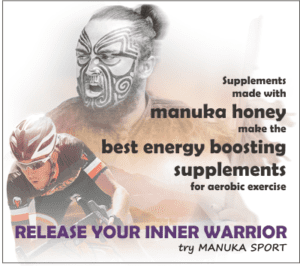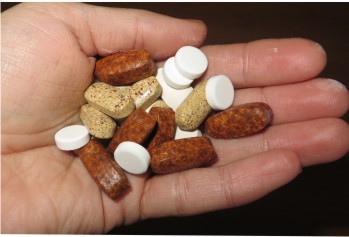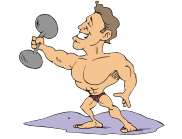If you are serious about your exercises, then you surely know about “hypoglycemia cycle”. Low blood sugar.
Within 45–90 min of moderate to high intensity exercise your glycogen stores can be almost entirely depleted. What does this mean? It means no fuel in your tank. No more energy. And not for another set of exercises, but to ensure the good functioning of your organism. If you keep on exercising, your body will need other sources to provide energy, such as fat (Wade H Martin and Samuel Klein, 1998).
What factors can influence our carbohydrate stores?
A person who exercises regularly will learn from his own experience to recognize the factors that influence his performance levels and that his body’s response to exercise can be extremely variable. Some of these factors may be emotional and physiological, but the physical factors are the most important: sleep, hydration, immune system responses, dietary supplementation and prior exercise. Prior exercise, either very intense or very protracted, can deplete glycogen stores in the body.
Muscle & liver glycogen → carbohydrates → energy to exercise
To be able to do the desired exercise you need energy. This energy is created from your carbohydrate availability found in the form of skeletal muscle and liver glycogen. These stores will determine the performance during prolonged bouts of moderate-to-high intensity exercise.
If you do this type of exercise that depletes your body from its glycogen, you need to supplement it with external carbs. You can eat a piece of glucose, a fruit or drink something sweet, but these will not provide immediate glycogen. A recommended alternative, healthy and effective, is honey.
Honey has a perfect combination of sugars, especially glucose and fructose, (but also maltose, sucrose, isomaltulose with rapid absorption) which will be immediately turned into liver glycogen.
also read Honey benefits for athletes
Take honey after intense aerobic exercise
The role of glucose–fructose co-ingestion on liver and muscle glycogen repletion following prolonged exercise was analyzed in the study “Glucose Plus Fructose Ingestion for Post-Exercise Recovery—Greater than the Sum of Its Parts” conducted by Javier T. Gonzalez et al in 2017.
It was shown that eating glucose and fructose together (as it is found in honey) provides faster rates of carbohydrate absorption than the sum of glucose and fructose absorption rates alone. Similar metabolic effects can be achieved via the ingestion of sucrose – also found in honey.
Carbs are not equally absorbed in the body.
· Skeletal muscles glycogen is covered in an equal rate by either glucose-fructose mixture or glucose alone.
· Liver glycogen repletion rates are approximately doubled with ingestion of glucose–fructose mixtures over isocaloric ingestion of glucose alone.
Even more, the glucose-fructose mixtures ingestion alleviates gastrointestinal distress when the ingestion rate approaches or exceeds the capacity for intestinal glucose absorption (~1.2 g/min).
Conclusion of the study: Carbohydrate ingestion at a rate of ≥1.2 g carbohydrate per kg body mass per hour appears to maximise post-exercise muscle glycogen repletion rates whilst also minimising gastrointestinal distress.
Eat honey instead of a fruit or a peace of glucose after 1 hour of aerobic exercise to replenish your glycogen stores.
• The study “Effects of Post-Exercise Honey Drink Ingestion on Blood Glucose and Subsequent Running Performance in the Heat” by Nur Syamsina Ahmad et al, published in 2015, showed that rehydration with honey drink improves running performance and glucose metabolism compared to plain water in the heat.
If the carbohydrate ingestion is sub-optimal (≤0.8 g kg body mass−1·h−1) for effective restoration of muscle glycogen and repeated exercise capacity, it should be supplemented with protein, as amino acids act synergistically when co-ingested with carbohydrate to potentiate insulin secretion. (Abdullah F. Alghannam et al., 2018).
Be careful if you a diabetic. Especially type 1 diabetic. If there is not enough insulin available, the blood glucose levels can actually increase right after exercise. Insulin is required to “unlock the door” for the glucose to the muscles to provide energy. If there is not enough, glucose will only spike the levels in the blood. One solution would be to alternate anaerobic exercise with aerobic exercise (see below).
What is aerobic exercise and why are things different after doing it?
Our body reacts differently according to the type of exercise we do. Basically there are 2 types of exercises: aerobic and anaerobic exercises.
Aerobic exercise (e.g.: swimming, jogging, cycling or walking) also known as endurance exercise, has a low to high intensity and involves continuous and repeated movements of large muscle groups. It depends primarily on the aerobic energy-generating process and can be performed for extended periods of time.
Aerobic means “relating to, involving, or requiring free oxygen”, and refers to the use of oxygen to adequately meet energy demands during exercise via aerobic metabolism. (wiki)
There are lots of studies available showing that prolonged endurance exercise leads to muscle glycogen depletion, which leads to fatigue and makes it difficult to meet the energetic requirements of training and competition.
Anaerobic activities (e.g.: short sprints, high-intensity intervals, and resistance exercise – weight lifts and working against a resistive force) also known as resistance exercise, is an intense physical exercise that causes lactate to form. This type of exercise is used:
– by athletes in non-endurance sports to promote strength, speed and power;
– by body builders to build muscle mass.
Anaerobic exercise leads to greater performance in short duration, high intensity activities, which last from mere seconds to up to about 2 minutes. Any activity lasting longer than about two minutes has a large aerobic metabolic component.
Glycogen in resistance exercise:
When performing resistance exercise, glycogen is crucial to re-synthesize the phosphate pool, which provides energy during high intensity muscle contractions. This reduction in glycogen content during exercise is determined by the duration, intensity and volume of the performed exercise bout.
The largest reductions in glycogen are seen with high repetitions with moderate load training, an effect that mainly occurs in type II fibers.
Yet, some studies say that carbohydrate ingestion before resistance exercise plays a relatively important role in energy metabolism and increases the amount of total work, while other studies say there is no benefit of carbohydrate ingestion on total work capacity.
Recent studies showed that low-glycogen availability does not influence the work in resistance exercise and does not enhance the activity of genes involved in muscle hypertrophy (muscle don’t grow). It seems that glycogen availability has no influence on the anabolic effects induced by resistance exercise.
And since resistance exercise does not even require full glycogen stores, it doesn’t deplete them after the exercise.
Anaerobic exercise does not cause hypoglycemia.
Lifting weights or working against a resistive force, also known as resistance exercise, performed mainly in bodybuilding, has been found to not trigger hypoglycemia.
French DN et al, in 2007 and Guezennec Y et al. in 1986, have analyzed the changes that took place in the body after anaerobic exercise and their findings showed increases in 4 elements: epinephrine, norepinephrine, lactate, and growth hormone, which could all help in stabilizing blood glucose levels (Yardley JE, 2014).
 according to Davey RJ et al., 2014 and Fahey AJ et al., 2012
according to Davey RJ et al., 2014 and Fahey AJ et al., 2012
In resistance exercise the glucose breakdown becomes rapid and exceeds the capacity of the oxidative systems. This results in the breakdown of glucose to lactate without the use of oxygen in the muscles (anaerobic glycolysis). Circulating levels of catecholamines (epinephrine and nonepinephrine) increase substantially and exert an overriding influence on glucose release by the liver (Kjaer M et al., 1986). This can lead to glucose production exceeding demand, resulting in an increase in blood glucose concentration (Calles J et al. 1983).
High-intensity exercise is also associated with increases in growth hormone and lactate, both of which can serve to spare circulating blood glucose. Growth hormone promotes lipolysis, potentially decreasing the body’s reliance on circulating glucose, and lactate is a gluconeogenic precursor that can be used by the liver to create new glucose.
The hormonal responses in the body depends a lot on the way you do the exercises, the type of training protocol you have selected, if you do a very low number of repetitions with a very heavy weight and long rest periods, or if you do a high number of repetitions with a light weight and short rest periods (as shown in the study “. Effects of very short rest periods on hormonal responses to resistance exercise in men.”, Rahimi R et al. 2010 and in “Physiologic responses to heavy-resistance exercise with very short rest periods”, Kraemer WJ et al., 1987).
Even if the resistance exercise is started with a low-glycogen availability, muscle protein synthesis following a single bout of resistance exercise appeared to be unaffected by the level of glycogen (Camera DM et al. 2012) and performing the exercise could improve the acute signaling processes that promote mitochondrial biogenesis to a larger extent compared to exercise with normal glycogen levels (Camera DM, 2015)
Combine aerobic exercises with anaerobic exercises to avoid glycogen depletion (hypoglycemia)!
Performing resistance exercise before aerobic exercise has been shown to have a protective effect against hypoglycemia.
Performing resistance exercise after aerobic exercise can also prevent further declines in blood glucose levels.
Anaerobic activities such as short sprints, high-intensity intervals, and resistance exercise can all be used successfully to help prevent hypoglycemia during exercise and thus decrease the reliance on carbohydrate consumption during exercise to maintain blood glucose levels.
=======
References:
Glucose Plus Fructose Ingestion for Post-Exercise Recovery—Greater than the Sum of Its Parts?
Exercise Strategies for Hypoglycemia Prevention in Individuals With Type 1 Diabetes





